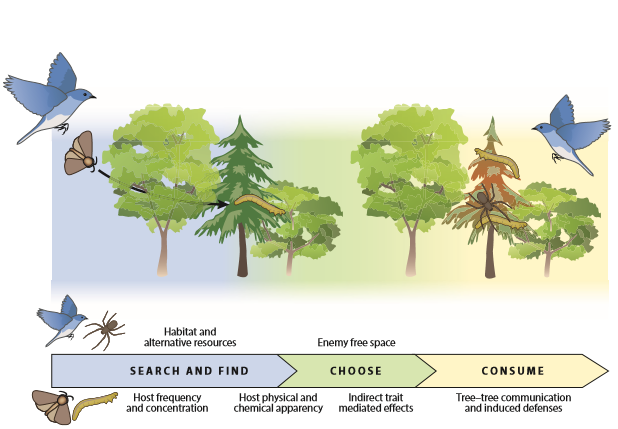holistic management of emerging forest pests and diseases
New research presents findings on tree diversity and forest resistance to insect pests
An article recently published for review in advance in the Annual Review of Entomology analyses the effects of increasing tree species richness on tree resistance to pest damage. The paper called "Tree Diversity and Forest Resistance to Insect Pests: Patterns, Mechanisms and Prospects" presents a quantitative assessment of tree diversity effects on insect herbivory and a discussion of plausible mechanisms underlying the observed patterns.

Conceptual diagram showing how neighborhood diversity around a focal tree can reduce the damage caused by a specialist forest insect through bottom-up and top-down forces at the successive stages of host tree recognition,colonization, and exploitation. Source: Jactel et al. (2020). Tree Diversity and Forest Resistance to Insect Pests: Patterns, Mechanisms and Prospects. Annual Review of Entomology, Vol. 66:- (Volume publication date January 2021). Review in Advance first posted online on September 8, 2020
The authors of the article, amongst whom are renowned HOMED researchers, base their quantitative review on more than 600 study cases. The study’s results indicate that insect herbivory is on average lower in mixed forest stands than in pure stands, with the observed diversity effects being contingent on herbivore diet breadth and tree species composition.
The study found that tree species diversity mainly reduced damage of specialist insect herbivores in mixed stands with phylogenetically distant tree species. The paper’s findings provide essential guidance for forest pest management, and recommendations and working hypotheses that can serve to lay the groundwork for research to come.
The expected final online publication date for the Annual Review of Entomology, Vol. 66 is 11 January 2021.